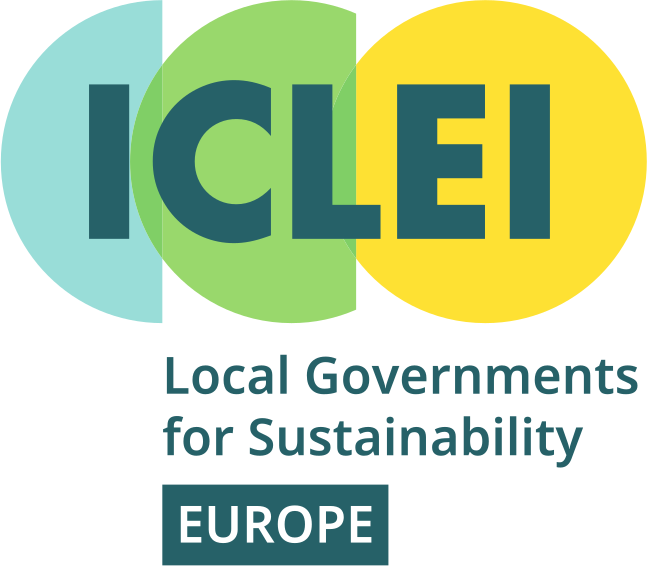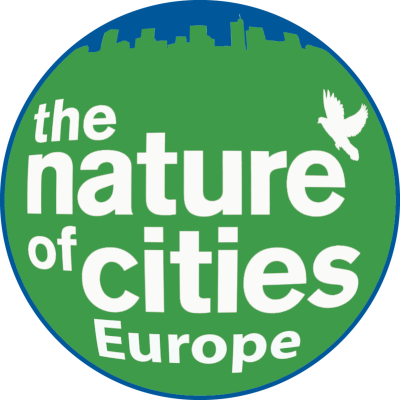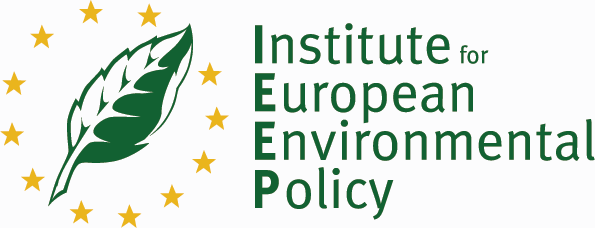
Area characterisation:
Bogota is the capital, and the largest urban agglomeration, of Colombia with a population close to 8 million. In the last three decades, the population of Bogota has increased from 4,22 to 8 million. The rapid urban growth of Bogota has generated significant environmental impacts, driven by an extensive transformation of natural ecosystems. Some impacts include the extreme pollution of several streams and rivers that cross the city; and the loss of an extensive coverage of wetlands and forest covers that covered the city until the beginning of the 20th century. As a result, Bogota has compromised the vital supply of essential ecosystem services, including the provision of drinking water, capture of atmospheric pollutants, climate regulation and runoff control, as well as several cultural ecosystem services related to recreation, mental well-being and social cohesion.
Objective:
In response to the social challenges and environmental impacts caused by urban growth, Bogota adopted the incorporation of green and blue infrastructures in several urban planning instruments. The most important action was the implementation of the local concept of Main Ecological Structure (EEP for its Spanish abbreviation) in 2000. The EEP's purpose is the protection and management of ecological networks that reconcile urban development with the conservation of the structures and functions of ecosystems, as well as their ability to provide ecosystem services.
Financing:
The financing and implementation of actions for the protection, restoration and management of those green infrastructures included in the EEP of Bogota, have usually been in charge of institutions of the Mayor's Office of Bogota, such as the District Secretary for the Environment and the Botanical Garden of Bogotá.
Specific funds to invest in Bogota´s EEP are defined in a city's district development plan, which projects priority actions for the city for 4 years. Additionally, national institutions in charge of biodiversity such as the Alexander von Humboldt Institute and various non-governmental organizations (e.g. Fundación Cerros de Bogota, Asociación Bogotana de Ornitología, Fundación Humedales de Bogotá, Grupo Economunitario) have also developed study and conservation actions on the EEP through projects supported by government and international cooperation funds.
Potential impacts/benefits:
The main impacts of the EEP identification and implementation since 2000 in Bogota, has been related directly to the green space management (including enhancing/ conserving urban biodiversity), as well as in a participatory planning and governance of the nature in this city. The conservation efforts displayed in the COB is the best example. Other impacts include climate resilience and risk reduction, in addition to enhanced urban regeneration through restoration processes and increasing social cohesion by the implementation of several citizen initiatives around the EEP spaces protection.
The key benefits of the EEP implementation relate to:
- Maintaining Biodiversity.
- Increasing quality and quantity of green and blue infrastructures.
- Improving connectivity and functionality of green and blue infrastructures.
- Greater ecological connectivity across urban regenerated sites.
- Carbon sequestration and storage.
- Improving water quality
- Improving air quality
- Reducing run-off.
- Flood peak reduction.
- Reducing flood risk.
- Increasing amount of green open spaces for residents.
- Increasing communities’ sense of ownership and social interaction
Actions:
Bogota conceived and adopted the EEP as networks of green and blue infrastructures with the main purpose of protecting and restoring the “set of biotic and abiotic elements that support the essential ecological processes of the territory” seeking to enhance the well-being of the city population. Different types of natural and semi-natural spaces make up the EEP of Bogota such as protected areas, metropolitan parks and ecological corridors. The EEP was implemented to play an important role for recreation and the urban realm of Bogota, as well as in risk prevention and runoff control. To fulfill that purpose, the EEP has been promoting the protection, restoration, and sustainable use of these ecological networks based on social participatory work with academic, governmental, and civil society stakeholders. This participatory approach is occurring through tools to understand and communicate the benefits that green and blue spaces have for citizens’ well-being. The hills around the eastern part of the city called the “Cerros Orientales de Bogota” (COB) provide opportunities to maintain the EEP in Bogota. The COB is part of the protected area “Reserva Forestal Protectora del Bosque Oriental de Bogota”. This protected area is considered natural heritage and a strategic ecosystem of Bogota due to its role as an ecological corridor, and provider of ecosystem services. However, the legal protection status of this area has not stopped the formal and informal growth of the city. In response, in a court order issued by the state of Colombia, it was decided to define an adequacy strip in which different institutions and authorities were requested to implemented a management plan. As a result, several projects have been carried out, such as the consolidation of a socio-ecological corridor, which seeks citizen hills appropriation. Also, an ecological restoration initiative emerged about five years ago in the COB led by the Instituto Alexander von Humboldt. This initiative has been facilitating the exchange of citizen knowledge and making visible the ecosystem services offered by the COB to the city.
Transferability of result:
Despite some limitations and barriers, the processes that have been developed in the EEP such as the COB case, represent an approach that could be replicated in other urban areas worldwide. Particularly, other cities in Latin America where there is a priority the use of NbS to mitigate impacts of urban growth and reduce gaps in the access to benefits of nature for people's well-being.
Several cities in Latin America should consider the incorporation of ecological networks as NbS especially where challenges are generated by the rapid and disorder urban growth in the region. The Bogota EEP case study highlights the priority to find alternatives to meet the purposes of grey infrastructure and the functional maintenance of networks of green infrastructures capable providing for people's well-being as well as sustainability for the city and the surrounding areas.
Lessons learnt:
- The incorporation of socio-ecological networks in the urban planning of Bogota has made it possible to mitigate the negative effects of, arguably, a disordered and informal urban growth of Bogota over the biophysical structure and population well-being.
- The protection, restoration, and sustainable use of these socio-ecological networks in the long term, as well as the maintenance of their contributions to human well-being, will only be possible with intervention processes based on collaborative work with different stakeholders.
- Nature-Based Solutions such as those developed in the COB by different organizations and citizen initiatives are an excellent example of how to progress in the protection, restoration, and sustainable use of socio-ecological networks.
- Conservation initiatives in the EEP case should be based on how best to reduce and manage the conflict between society, economic development, and nature in cities worldwide.
- It is necessary to effectively address the indifference and the lack of interest of people and decision-makers around the value of the green and blue spaces that make up this type of socio-ecological networks.
Organisations:
Alcaldia Mayor de Bogota: https://bogota.gov.co/
Secretaria Distrital de Ambiente: http://www.ambientebogota.gov.co/
Jardin Botanico de Bogota: https://www.jbb.gov.co/
Instituto Alexander von Humboldt: http://www.humboldt.org.co/es/
Fundacion Cerros de Bogota: https://cerrosdebogota.org/
Fundación Humedales de Bogota: https://humedalesbogota.com/
Pontificia Universidad Javeriana: https://www.javeriana.edu.co/
Client:
City of Bogota
Design team:
Local government of Bogotá (Distrital Secretariat of Planning)
Contacts:
Global goals:
-
3. Good Health and well being
-
11. Sustainable cities and communities
-
13. Climate action
-
15. Life on land
NBS goals:
- Restoring ecosystems and their functions
- Developing climate change mitigation
- Improving risk management and resilience
- Nature-based solutions for improving well-being in urban areas
NBS benefits:
- Developing climate change adaptation; improving risk management and resilience
- Developing climate change mitigation
Publications and reports:
- Amaya-Espinel J.D, Hernández-Garcia J. & Cruz-Suárez M.A. 2021. State of the art, good practices and NbS typology in European Union and Latin America cities. Report D2.1 v1.1. European Union’s Horizon 2020 research and innovation programme under grant agreement no. 867564 tinyurl.com/conexus-project.
- Andrade, G., Remolina, F. & Wiesner, D. 2014. La Estructura Ecológica Principal en lo local. Propuesta de aplicación en la renovación urbana de Fenicia, Las Aguas, Bogota. Revista nodo 8, 42–54.
- Andrade, G. I., Remolina, F. & Wiesner, D. 2013. Assembling the pieces: a framework for the integration of multi-functional ecological main structure in the emerging urban region of Bogota, Colombia. Urban Ecosyst. doi:10.1007/s11252-013-0292-5.
Mejía, M. A. 2016. Naturaleza Urbana: Plataforma de Experiencias. Instituto de Recursos Biológicos Alexander von Humboldt 2016.











